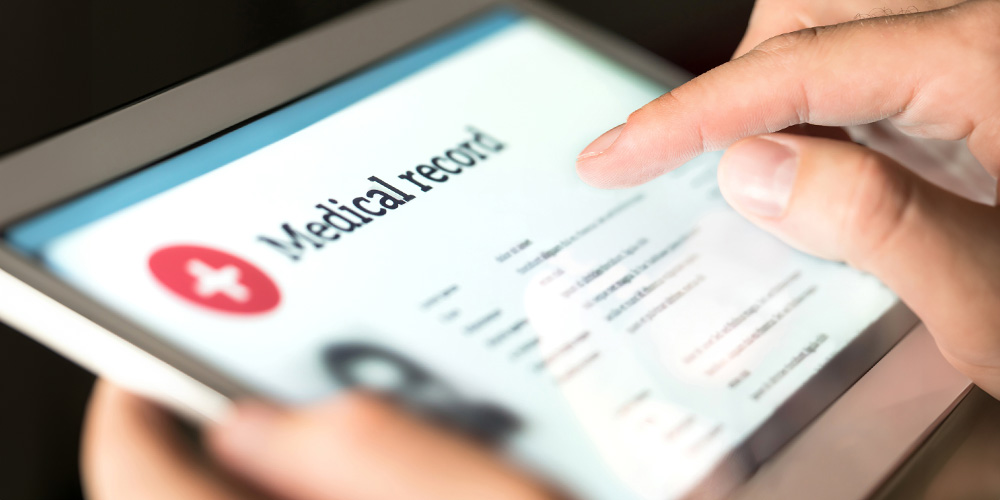In today’s rapidly evolving healthcare landscape, the Digital Front Door is emerging as a critical strategy for improving patient experiences, streamlining access to care, and enhancing overall operational efficiency. At its core, the Digital Front Door refers to a suite of digital tools, platforms, and services—such as patient portals—that unify patients’ interactions with healthcare providers. By offering a convenient and often personalised entry point, the Digital Front Door significantly elevates patient engagement and satisfaction while improving clinical outcomes.
Key Components of the Digital Front Door in Healthcare
- Patient Portals and Mobile Apps
Central to any Digital Front Door strategy, patient portals and mobile apps empower individuals to take an active role in managing their health. They offer:
- 24/7 Access to Health Information: Patients can view medical records, lab results, and other critical data on demand.
- Appointment Management: Schedule, reschedule, or cancel visits with just a few clicks.
- Prescription Refills and Secure Messaging: Request medication refills and communicate with healthcare providers in a secure environment.
By placing healthcare management in the palms of patients’ hands, these tools drive higher engagement and improved health outcomes.
- Telemedicine and Virtual Care
Another cornerstone of the Digital Front Door, telemedicine extends care beyond traditional clinical settings:
- Video Calls and Phone Consultations: Patients can connect with healthcare professionals from home, reducing travel time and costs.
- Remote Monitoring: Chronic conditions and post-operative care can be managed through at-home monitoring tools, benefitting those in remote or underserved areas.
As a result, telemedicine not only boosts patient satisfaction but also alleviates strain on healthcare facilities.
- Online Appointment Scheduling
Online scheduling solutions transform the traditionally cumbersome process of booking medical appointments:
- User-Friendly Interfaces: Patients can choose from available time slots at their convenience.
- Automated Notifications: Reminders via email or SMS reduce the likelihood of missed appointments.
- Optimised Clinic Schedules: Fewer cancellations and no-shows help practices operate more efficiently.
These self-service tools empower patients and cut down on administrative burdens, illustrating how the Digital Front Door fosters smoother healthcare journeys.
- Symptom Checkers and AI-Powered Tools
AI-driven tools offer interactive options that guide patients in evaluating symptoms and determining the most appropriate level of care:
- Intelligent Triage: By analysing symptom inputs, AI can suggest whether the patient needs urgent care, a consultation with a general practitioner, or self-care at home.
- Personalised Recommendations: Patients receive tailor-made advice, ensuring prompt and effective interventions.
These capabilities reflect how artificial intelligence is integral to the evolving Digital Front Door ecosystem.
- Mobile Health (mHealth) Solutions
mHealth encompasses apps and wearable devices that facilitate continuous patient engagement:
- Health Tracking: Monitor vitals, physical activity, and other health metrics.
- Chronic Disease Management: Real-time data enables healthcare providers to offer timely interventions, particularly for chronic conditions like diabetes or hypertension.
By maintaining close contact between patients and providers, mHealth solutions boost adherence to treatment plans and improve long-term outcomes.
- Patient Communication and Engagement
Effective communication is essential for a successful Digital Front Door experience:
- Personalised Health Education: Deliver targeted wellness tips and education through SMS, email, or app notifications.
- Interactive Channels: Provide spaces where patients can ask questions, share feedback, and receive timely support from care teams.
A more informed and engaged patient population not only fosters better health outcomes but also strengthens patient-provider relationships.
- Integration with Electronic Health Records (EHRs)
Seamless EHR integration ensures comprehensive access to patient data:
- Consolidated Patient Histories: Clinicians can review up-to-date records for a clearer overview of a patient’s health status.
- Enhanced Care Coordination: Information sharing among different healthcare departments or external providers becomes streamlined and efficient.
When combined with the Digital Front Door, EHR integration paves the way for more coordinated and effective care delivery.
Benefits of the Digital Front Door
Enhanced Patient Experience
The Digital Front Door offers a user-friendly, 24/7 channel for patients to access healthcare information and services. With immediate, on-demand resources available through patient portals, patients gain greater control over their healthcare journey.
Improved Access to Care
By reducing geographical and logistical barriers, the Digital Front Door ensures that even individuals in remote or underserved areas can receive quality healthcare. Telemedicine visits, for instance, minimise the need for travel and lower wait times, ultimately improving health equity.
Efficiency for Healthcare Providers
Digital Front Door solutions help streamline administrative processes, cutting down on paperwork and freeing staff to focus on direct patient care. Automated appointment reminders, prescription refills, and virtual consultations all contribute to higher operational efficiency.
Better Health Outcomes
When patients have seamless access to healthcare services, they are more likely to follow through on treatment plans and engage in preventive care. This translates to improved clinical results, fewer hospital readmissions, and overall enhanced population health.
Conclusion
The Digital Front Door is reshaping how patients interact with healthcare services by integrating patient portals, telemedicine, online scheduling, and much more into a seamless, patient-centric ecosystem. As healthcare continues to evolve, embracing this approach not only empowers patients to take charge of their health but also enables providers to deliver higher-quality, more cost-effective care. By focusing on accessibility, efficiency, and engagement, the Digital Front Door represents the future of healthcare—one where every patient’s journey begins with the simple, digital touch of a button.



